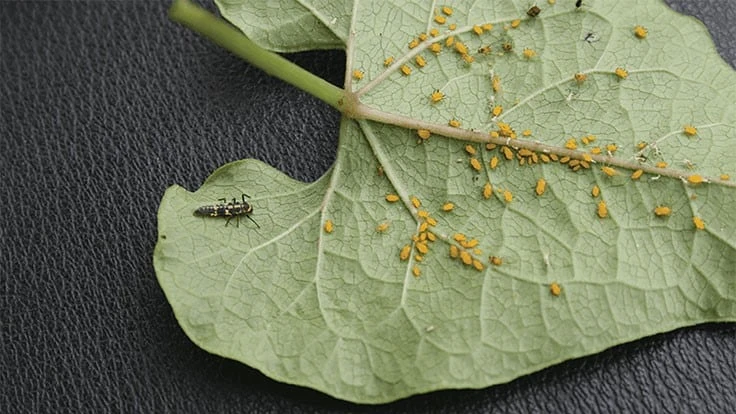
_fmt.png)
Biological control agents, such as parasitoids and predators, are purchased from commercial biological control suppliers or distributors and upon arrival are released into greenhouses to regulate insect or mite pest populations. These biological control agents must be effective in keeping insect or mite pest populations below plant-damaging levels. But what are the attributes that constitute an effective biological control agent? This article discusses a number of attributes that biological control agents must have to effectively regulate insect or mite pest populations and prevent damage to greenhouse-grown horticultural crops. The principal attributes of an effective biological control agent are: efficient searching ability, high parasitism or predation rate, high reproductive potential, minimal handling time, ability to survive at low prey densities and ability to adapt to a wide range of environmental conditions.
Efficient searching ability
Biological control agents must be able to search for and locate hosts or prey at low densities on plants to prevent potential outbreaks, which may be accomplished by detecting prey odors or their movement. In general, an efficient searching ability will lead to low pest population densities, resulting in less damage to greenhouse-grown crops.
High parasitism or predation rate
Parasitoids and predators must kill insect or mite pests at a greater rate than the reproductive rate of female pests to keep pest populations below plant-damaging levels. Furthermore, biological control agents must provide sufficient mortality as host or prey populations increase to avoid pest outbreaks.

High reproductive potential
Female biological control agents should produce high numbers of offspring to keep up with the reproductive capacity of various insect and mite pests including aphids and the twospotted spider mite, Tetranychus urticae. In addition to a high reproductive potential, there should be multiple generations of the biological control agents present during the crop growing season.
Minimal handling time
Biological control agents should consume prey quickly (predators) or lay eggs rapidly (parasitoids) so more time can be devoted to searching, locating and attacking additional prey. In general, small populations of a biological control agent with minimal handling time may be more effective in regulating a designated insect or mite pest population than high populations of a biological control agent with a long handling time.
Ability to survive at low prey densities
Biological control agents must be effective in regulating insect or mite pest populations below plant-damaging levels. However, biological control agents must maintain a low enough number of insect or mite pests to sustain their populations without eliminating any food sources.
_fmt.png)
Ability to adapt to a wide range of environmental conditions
Parasitoids and predators must be able to adapt to a variety of temperatures, relative humidities and day length conditions to be effective in regulating insect or mite pest populations. For instance, above a certain temperature (54°F or 12°C), the greenhouse whitefly parasitoid, Encarsia formosa, female has a higher reproductive capacity than the greenhouse whitefly, Trialeurodes vaporariorum, female. However, the reverse is true below a certain temperature.
Also, at an optimal temperature (65 to 80°F or 18 to 26°C) and relative humidity (above 60%), the predatory mite, Phytoseiulus persimilis, will effectively regulate populations of the twospotted spider mite. However, when temperatures exceed 86°F (30°C) and/or the relative humidity is less than 60%, the predatory mite will no longer regulate twospotted spider mite populations below plant-damaging levels. Consequently, additional predatory mites are commercially available, such as Neoseiulus californicus, Galendromus occidentalis and Amblyseius andersonii, that tolerate higher or lower temperatures and lower relative humidities than P. persimilis.
Latest from Produce Grower
- TIPA Compostable Packaging acquires paper-based packaging company SEALPAP
- Divert, Inc. and General Produce partner to transform non-donatable food into Renewable Energy, Soil Amendment
- [WATCH] Sustainability through the value chain
- Growing leadership
- In control
- The Growth Industry Episode 8: From NFL guard to expert gardener with Chuck Hutchison
- 2025 in review
- WUR extends Gerben Messelink’s professorship in biological pest control in partnership with Biobest and Interpolis





